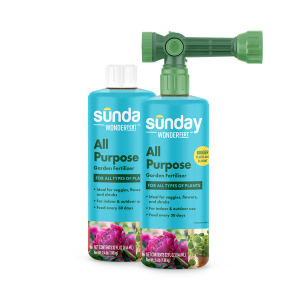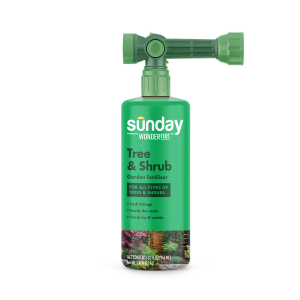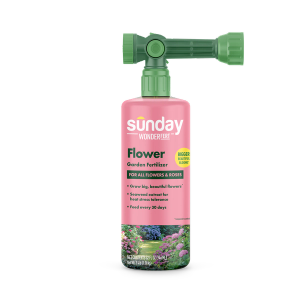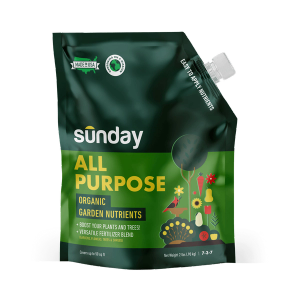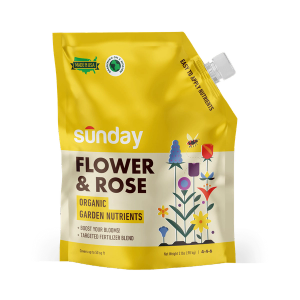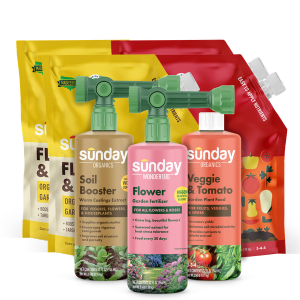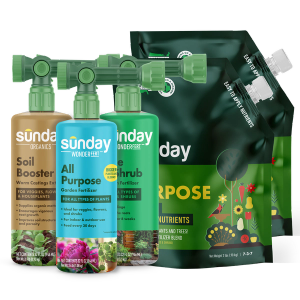Why water your garden?
Long story short: Plants require water to survive. Plants use water to take up nutrients from the soil, photosynthesize (make food), prevent overheating, and overall, just grow. One secret to a healthy garden is knowing just how much to water your plants, and unless you receive enough rain to keep your garden alive, your garden will likely require some supplemental watering.
Underwatering can lead to wilting and plant damage, overwatering can lead to disease and rot (not to mention wasted water resources, runoff, and possible pollution). But getting your watering juuuust right will avoid these common garden problems, use water efficiently, and help your garden thrive.
Garden layout is key
Whether you’re planting in-ground, in containers, or in raised beds, planning is everything when it comes to water in the garden.
Understand your soil
Proper watering starts pre-planting. Knowing your soil is essential because different soil textures hold or drain water differently. For example, sandy soils drain quickly while clay-heavy soils hold on to water longer. Adding organic matter can help sandy soils hold on to water and can help open up clay soils to allow better drainage.
Prep your pots
Choose your containers mindfully—porous material like terracotta will dry out quicker than glazed pots. Always choose pots with drainage holes (to avoid root rot) and select a potting mix that will both hold on to and drain water.
Create hydrozones
Hydrozones are areas of the garden that require different amounts of water based on microclimate and plant type. For example, shaded or low-lying areas typically need less frequent irrigation, while sunny sections and slopes usually need a little more water. Appropriate plant selection is key—select plants adapted to your climate, and group plants with similar water needs together in hydrozones to prevent over- or under-watering.
Manage weeds
Apply a few inches of mulch to garden beds to help retain moisture, prevent evaporation, and crowd out weeds. What do weeds have to do with it? Weeds compete with garden plants for resources, including moisture, so make sure to keep an eye out and hand pick or spot treat any weeds that do pop up.
When to water your garden
Knowing when to water is the first step toward irrigating efficiently. Keep the soil moist if you’re trying to get seed to germinate or get new plants established. Once established, shift to deep, infrequent watering to promote deep rooting, which will help reduce water use and boost plant health. Speaking of reducing water use: Keep an eye on the weather. Watering should really only be supplemental if natural rainfall is not enough for your plants. Reduce watering if you get some rain, and increase, if you’re able, during dry periods.
Sunday Tip:
Not sure if it’s time to water? Get your hands dirty! Feel the top 6 inches of soil—if it’s dry, irrigate, if not, hold off a little longer. Frequent, shallow watering leads to shallow roots and unhealthy plants.
How to water your garden
Ready to water? Follow these water-wise tips:
- Generally, veggie and ornamental plants need between 1–1 ½ inches of water (rainfall + irrigation) per week during the growing season, though this will depend on the individual species and environmental conditions.
- Measure how much water you’re applying by using water gauges or shallow cans (tuna cans work great!)
- Place your gauges throughout the garden
- Run your sprinklers or hose like you normally would
- Measure the water level in the gauges with a ruler and adjust watering time as needed, aiming to apply between ⅓ and ½ inch per watering session
- Apply water at the base of the plant, when possible. Why? Getting the leaves wet isn’t a very efficient use of water, and can lead to disease.
- Water early morning to avoid evaporation and loss of water (and to give any leaves that do get wet time to dry during the day).
Types of watering systems for gardens
Hand watering
Hand watering using a watering can or hose is a popular option for watering gardens and containers. This method allows for tailoring the amount of water applied, but can be a little time consuming if you have a large garden. Keep the water aimed at the base of the plant to avoid getting those leaves wet.
Sunday Tip:
If you use a rain barrel to capture water for hand watering purposes, just make sure to avoid using the water on edible plants.
Sprinklers
Sprinklers are also popular, particularly for large gardens. Smart irrigation systems allow for hydrozoning and more efficient water use. Often, though, leaves will get wet with sprinkler irrigation, so set your timers for early morning to allow leaves to dry out during the day.
Drip irrigation
Drip irrigation is extremely efficient because you can tailor the water applied to each plant and avoid evaporation and wet-leaf issues. These systems can be pretty pricey up front, but often save time, water, and money in the long-run as long as they are maintained properly.
The type of watering system you use will depend on your garden needs and setup, but whatever you choose, make sure you adjust watering practices throughout the season to adapt to weather conditions. Protect water quality and quantity by applying just enough water to keep your plants healthy and avoid runoff and overuse of our precious water resources by only applying to garden areas and not on pavement or other non-planted areas.
Cited sources
Efficient Use of Water in the Garden and Landscape. Texas A&M AgriLife Extension.
How to Water Your Garden. University of Maine Cooperative Extension.
Tips on Watering Your Garden. University of Missouri Extension.
Water Wisely: Start in your own backyard. University of Minnesota Extension.


